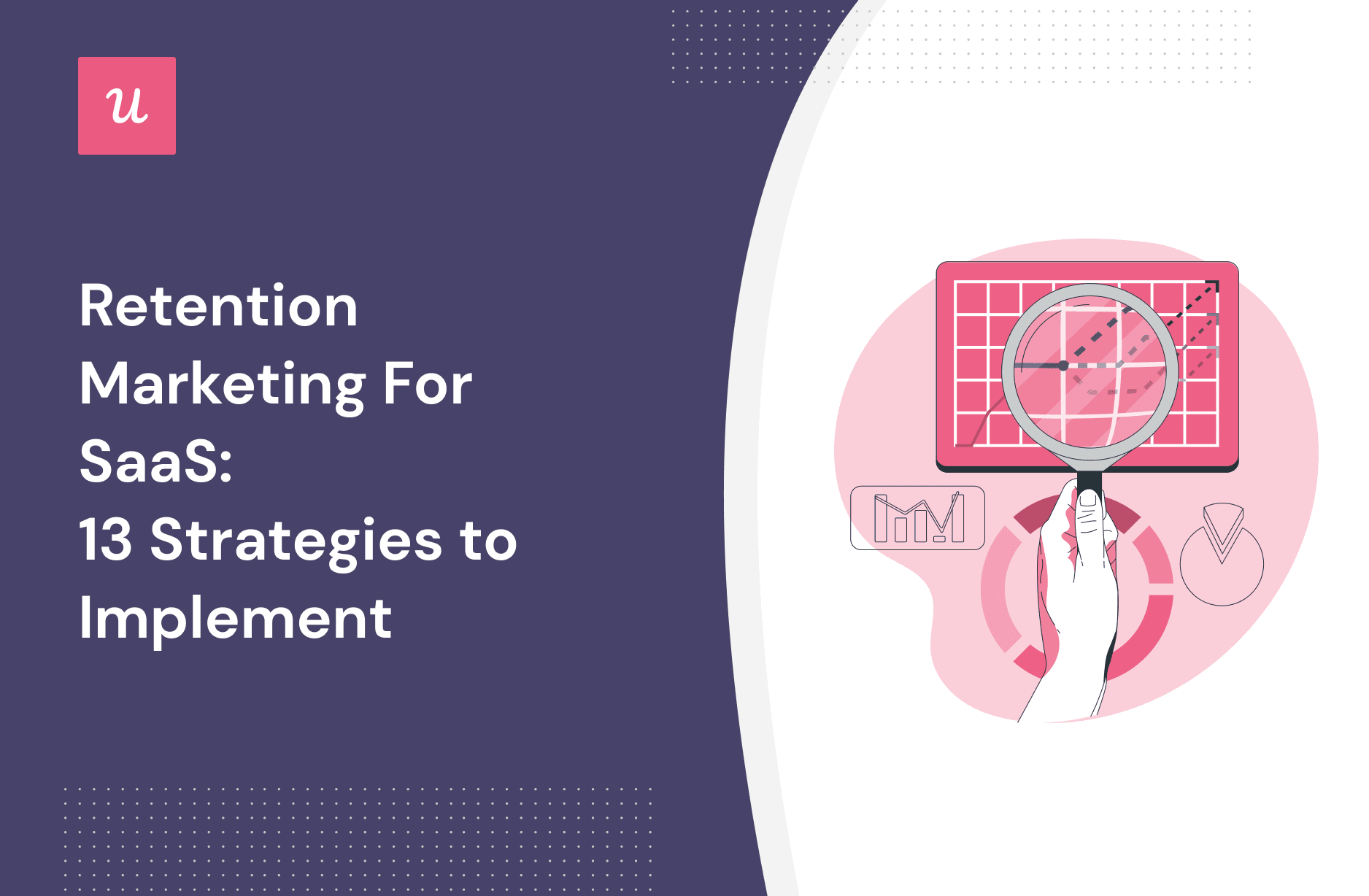
Looking to power up your retention marketing strategy?
Everybody in SaaS knows it’s relatively easy to attract users. The big deal is turning them into paying customers who keep renewing their subscriptions long-term.
But look no further! This article will show you practical strategies to crack the customer retention code and maintain sustainable recurring revenue.
Try Userpilot Now
See Why 1,000+ Teams Choose Userpilot

What is retention marketing?
Retention marketing focuses on building quality relationships with customers with the goal of turning them into repeat buyers.
The process begins during onboarding and typically involves studying user behavior to identify improvement opportunities at every stage of their journey.
It also means driving account expansion to unlock more value for users and make them want to stay.
Retention marketing vs. customer acquisition
Retention marketing and customer acquisition are two distinct marketing strategies with different approaches. Let’s consider some of the differences:
- Objectives and target audience: The main goal of acquisition marketing is to gain new customers and expand market share. On the other hand, retention marketing strategies aim to increase customer loyalty, reduce churn, and maximize the lifetime value of each existing customer.
- Channels: Customer acquisition strategies typically involve a broader range of channels to reach potential customers and create awareness. These channels include social media, paid ads, email, etc. Retention marketing needs direct and personalized communication with existing customers, so in-app is the best choice, often complemented by email.
- Stages in the funnel: Acquisition marketing happens early in the funnel—before potential customers convert. Retention marketing is done post-purchase.
Why do businesses need retention marketing?
Most people prioritize user acquisition when making marketing budgets and plans.
However, it’s also important to pay attention to retention, because what’s the point of acquiring users that won’t stay for long?
Below are the main reasons every company should implement retention marketing:
- Encourage repeat purchases: Customer acquisition can be costly and time-consuming, so it’s often more cost-effective to retain existing users that have already shown interest in your products.
- Improve customer retention rate: This would directly impact your company’s bottom line, as it leads to increased customer lifetime value (CLV) and a more predictable revenue stream.
- Create advocates and raving fans: Repeat purchases not only contribute to the company’s immediate revenue but also have the potential to build long-term relationships with customers, leading to continued loyalty and advocacy. Loyal customers can become brand advocates, promoting your company through word-of-mouth, reviews, and referrals, leading to organic customer acquisitions.
13 customer retention strategies for increasing the customer lifetime value
Convinced to focus on retention marketing in your SaaS? Implement the following strategies to get started:
Use customer data to personalize the onboarding process
Avoid generic onboarding flows. Instead, collect customer data with welcome surveys to understand users’ specific pain points and jobs to be done.
Use the information to segment users with similar characteristics and offer a personalized onboarding experience. This will reduce your time to value and improve adoption rates, increasing the chances that customers will stick with you.
Keep your welcome survey simple and concise—this isn’t the best time in the user journey for complex surveys. You should be good with just questions about the user’s role, objectives, or experience.
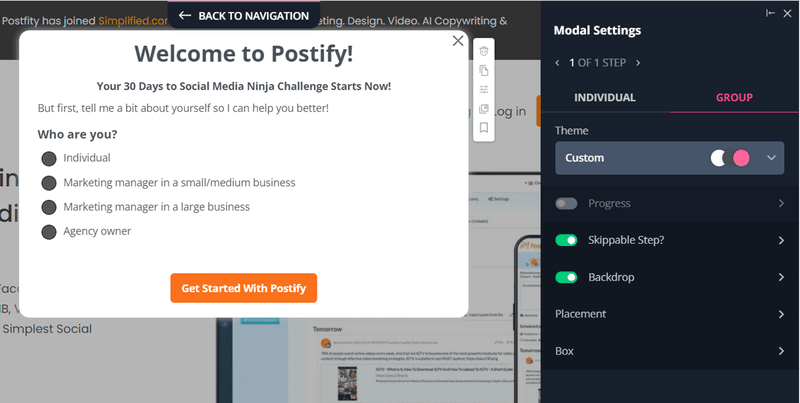
Implement an onboarding checklist to drive activation
Checklists trigger the Zeigarnik effect—a psychological phenomenon that describes the tendency of people to remember and be more focused on incomplete or interrupted tasks rather than completed ones.
This effect drives users to complete your checklist, experiencing the benefits of your product in the process. The trick is to decide on 3-4 actions users need to complete to reach activation and turn these into a checklist.
Like welcome surveys, you’ll need to customize your checklists to your user segments because activation means different things to different user personas.
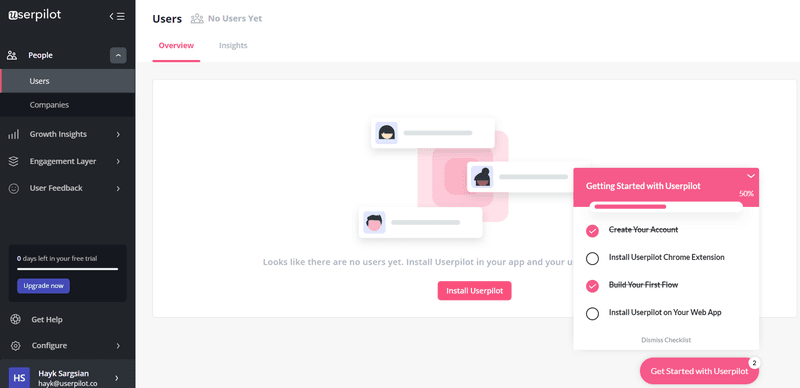
Use interactive walkthroughs to improve feature adoption and drive value
When users engage with a feature for the first time, hand-hold them and trigger an interactive walkthrough to help them learn by doing and gain value from a feature immediately.
The good thing about interactive walkthroughs is that each tip is triggered after the user interacts with the previous one. This ensures your customers are actively involved in the onboarding process and will have seen the usefulness of your tool by the time the flow is over.
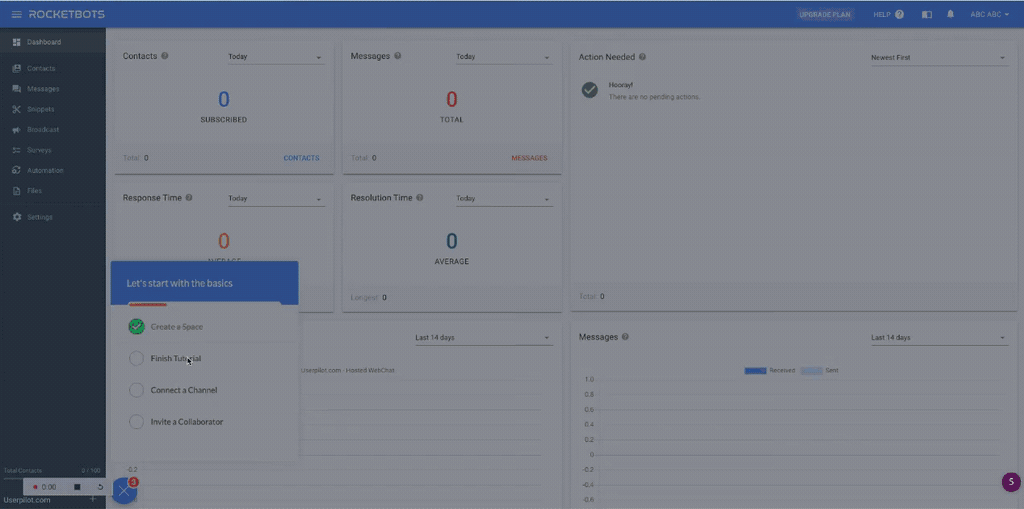
Celebrate customer successes to enhance engagement
Humans are wired to respond to positive reinforcement: you get a small dopamine hit when you receive a compliment and that makes you want to repeat the same actions to get that feeling again.
Repeated engagement increases the chances of adoption, which in turn benefits retention. Additionally, positive feelings while using your product create an emotional connection with your brand and strengthen customer relationships.
Gamification comes in many forms: you use a modal with a celebratory message, animations, badges, or more.
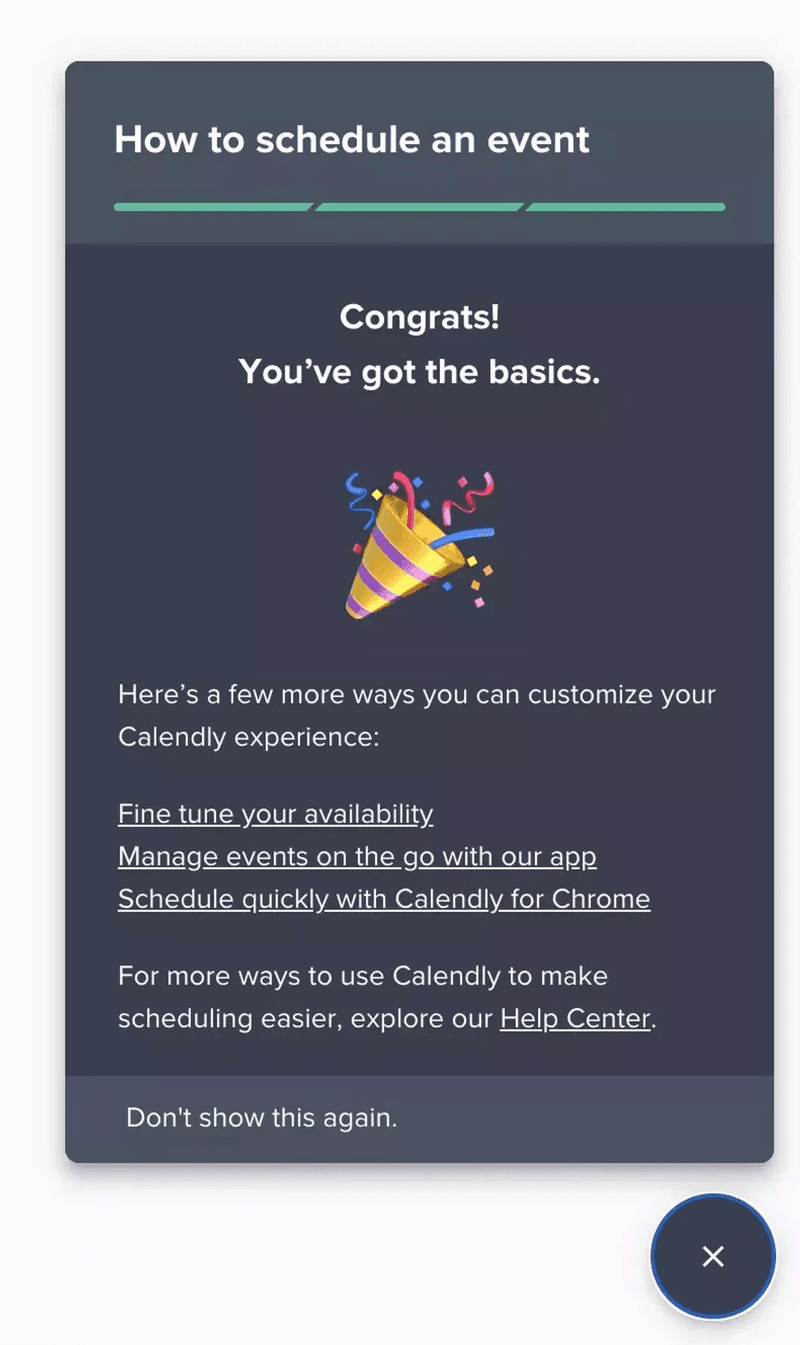
Leverage secondary onboarding to drive repeated value for existing customers
Onboarding doesn’t end after primary onboarding and key feature adoption. Employ secondary onboarding as part of your retention marketing strategy to drive continuous value.
Do this by encouraging existing users to adopt advanced or new features relevant to their jobs to be done. This improves adoption breadth and depth, and you know what that means—the more users integrate the product into their lives, the less likely they are to stop using it.
Here’s an example of Userpilot using an in-app modal to explain the benefits of adopting a new feature:
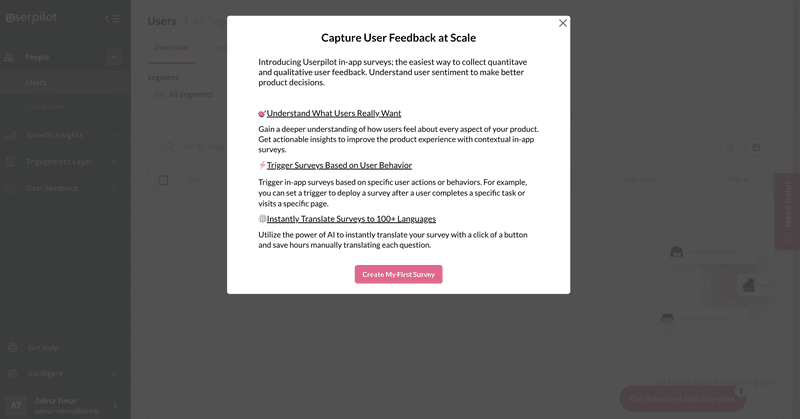
Anticipate customer needs and offer proactive help with tooltips
Dig into your support tickets, product usage data, and customer feedback to understand where users may need additional help. You could also consult with customer-facing teams to get more comprehensive insights.
Then, offer proactive help at those touchpoints with tooltips to improve the customer experience.
Observe the following tooltip best practices:
- Keep your copy short and informative—no room for fluff.
- Allow the user to dismiss the tooltip.
- Use progress indicators if you have multiple tooltips in a flow.
- Utilize Userpilot’s AI assistant to refine your microcopy.
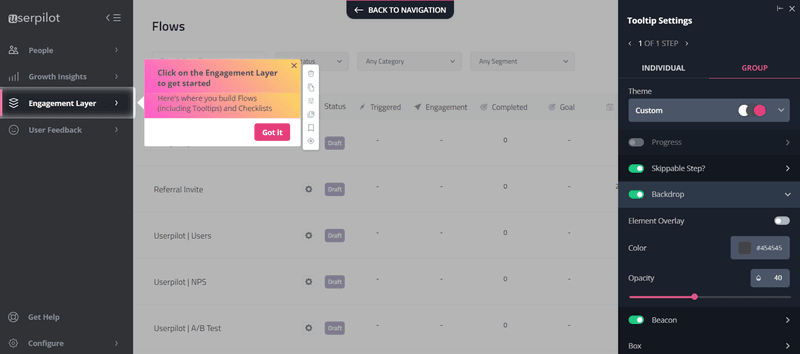
Provide self-service support with a resource center
Still, on proactive help, create a robust self-service center that customers can visit as needed.
You should include different formats of resources such as documentation articles, webinar recordings, video tutorials, etc. so everyone can find what works for them.
It’s also vital to keep the resource center up to date and regularly update it as you add/sunset features.
This ensures users find quick and easy answers to their problems without contacting support or leaving the app, removing friction and increasing the chances of retention.
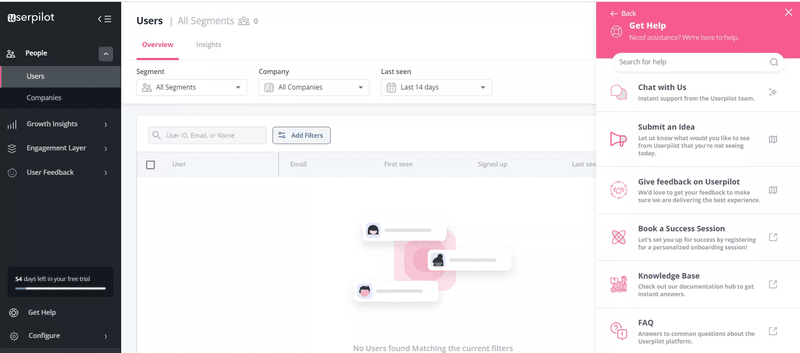
Collect customer feedback to improve customer experience
User feedback is invaluable as it gives you insight into customer needs and expectations.
Acting on the insights generated through feedback will enhance the customer experience and improve retention.
For example, feedback on the clarity of onboarding instructions and initial setup experience can aid in optimizing the onboarding process for better user adoption.
In-app surveys are the fastest and cheapest way of collecting feedback in SaaS. They enable you to collect highly contextual feedback from different user segments and find opportunities for improvement.
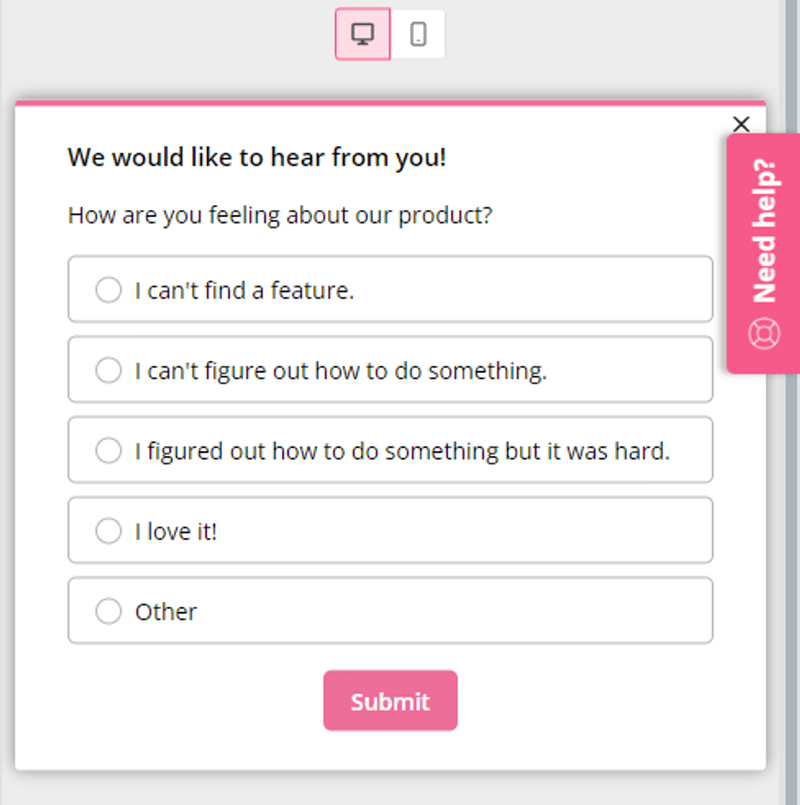
Implement loyalty programs to strengthen customer relationships
Loyalty programs offer rewards, discounts, or special offers to customers who continue to make repeat purchases or engage with the brand. These incentives create a sense of value for customers, encouraging them to stick with your company to earn and redeem rewards.
By participating in a loyalty program, customers become more engaged with your product, strengthening the customer-brand relationship.
If you want to start with loyalty programs, begin by exploring a referral campaign. It’s a simple way to build an emotional connection with users. Plus, most people know how referrals work, so you wouldn’t need to make many explanations.
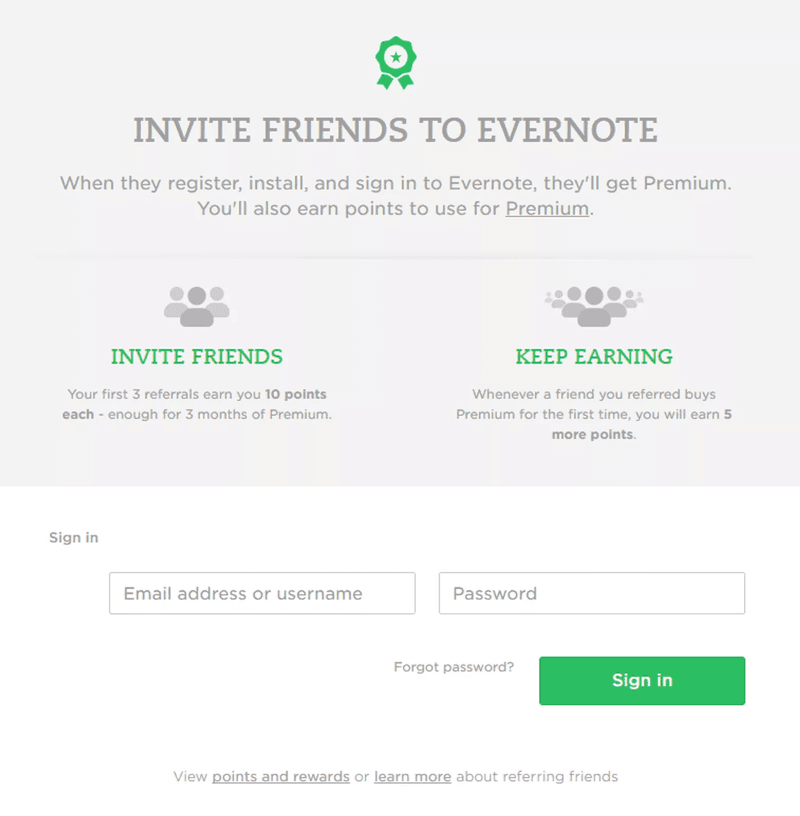
Send webinar invitations to educate customers on advanced use cases
Sometimes all the in-app guidance in the world isn’t enough for users to successfully adopt and utilize the more complex features of your product.
This means you need to step up your game and enrich your retention marketing strategy with white-glove service.
Firstly, you should check product analytics to identify advanced features that users interacted with but didn’t adopt.
Then, contextually prompt webinar invites using slideouts or modals to drive feature adoption.
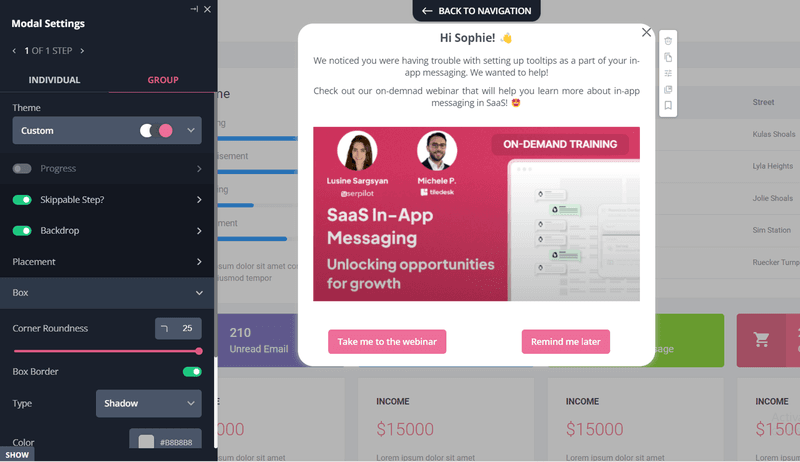
Identify at-risk customers using segmentation and reach out to retain them
Conduct NPS surveys and segment customers based on their scores. Pay more attention to detractors—those that rate you 0-6—because they’re more at risk of churn.
Reach out to your detractors, find the reasons for their dissatisfaction, and offer personalized support to win their hearts.
For example, detractors may feel your SaaS product lacks critical features or does not meet their specific needs. You could consider prioritizing these features in your development roadmap and keep them updated on progress.
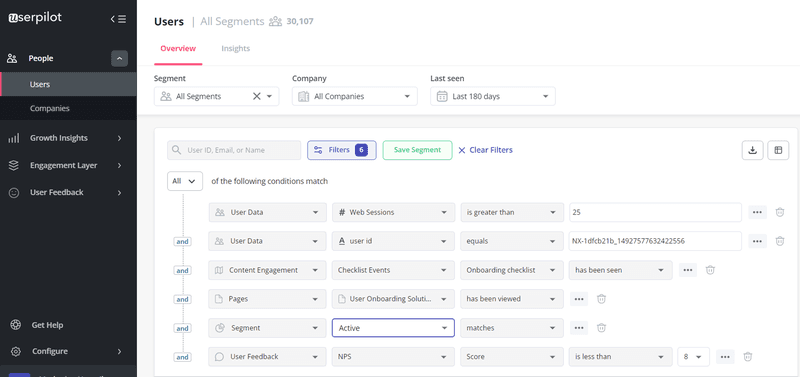
Use email marketing campaigns to bring back inactive users
Segment users that have been disengaged for a considerable period and deploy win-back emails to get them back on the app.
How you craft your email determines if customers will be motivated to return. Here are a few must-have elements:
- Personalize the emails as much as possible. For instance, asides from using their names, you could reference their past interactions with your SaaS, such as the last feature they used or their previous purchase, to remind them of their history with your product.
- Remind customers of the unique value your SaaS provides and how it addresses their specific needs.
- Highlight any new features or improvements you’ve made since they last used your service.
- Add a CTA that brings them back to the app.
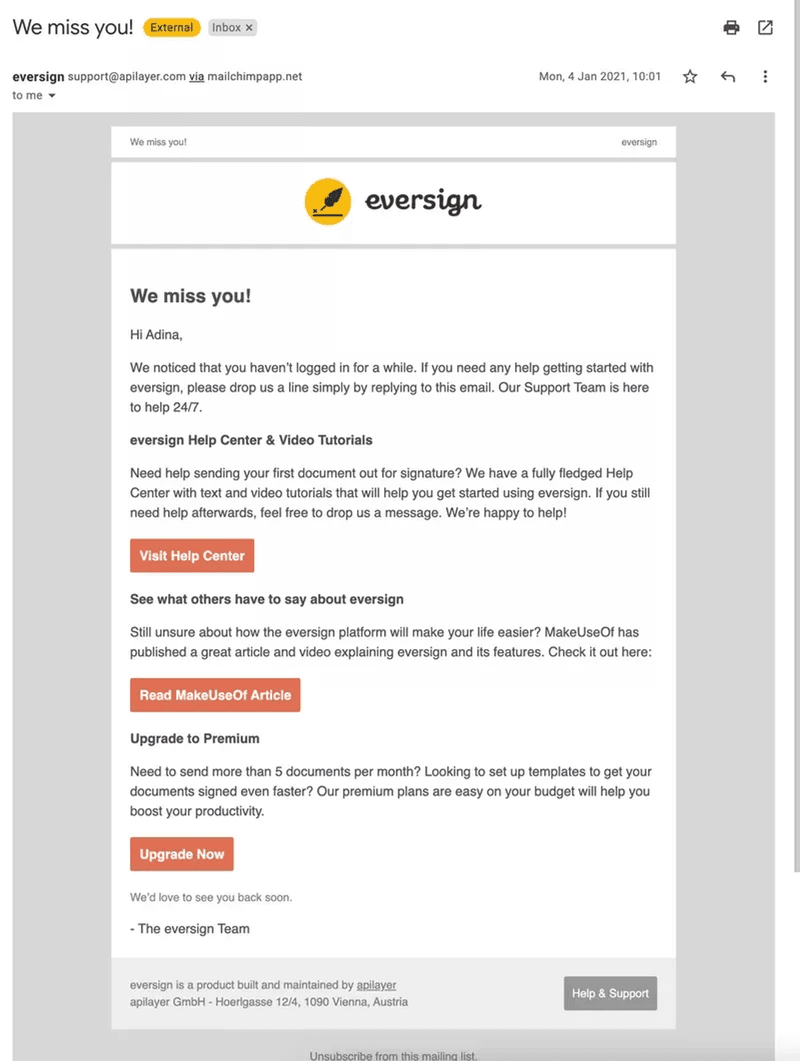
Trigger churn surveys to prevent and reduce churn
Not all churning users are a lost deal. If you make just a bit of effort you can retain a portion of them successfully.
Use your cancel page to remind customers of the value they’ll lose (along with data, history, etc.) if they opt-out.
This will make some users rethink their decisions. But for those that don’t, trigger a churn survey to understand the reason behind canceling.
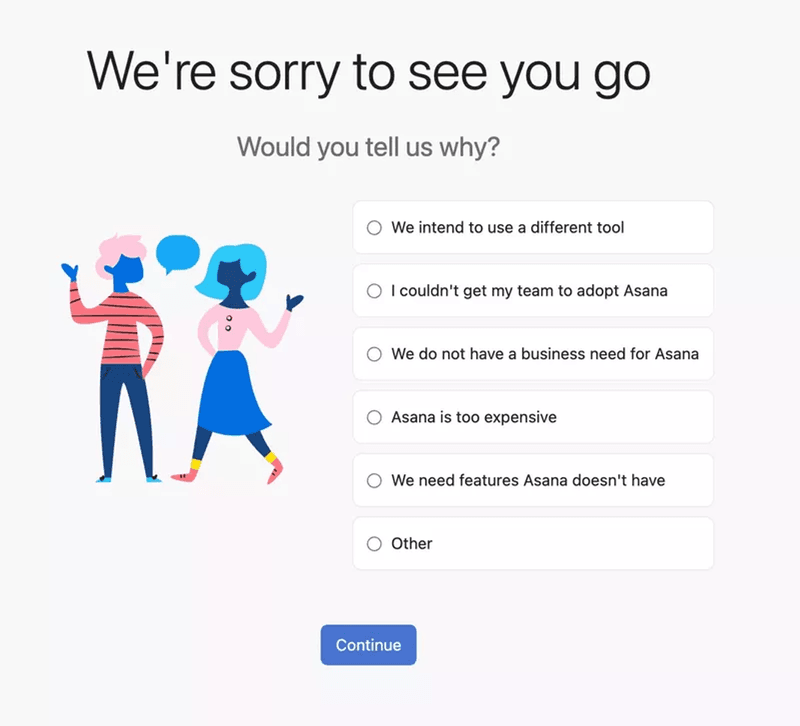
Based on the answers, offer personalized, compelling solutions to retain customers. For example, some customers might think your product is overpriced for what it offers. You could talk with them to see if they can downgrade to a lower version suitable to their budget and needs.
Even if you don’t manage to retain the users that responded to your surveys, work on fixing the reasons behind churn to prevent other users from abandoning your product.
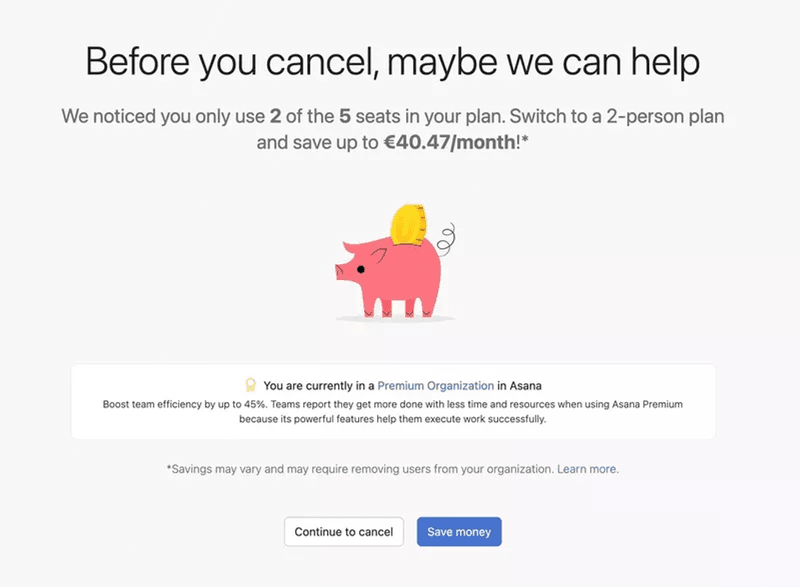
How to improve retention marketing strategies with Userpilot
Userpilot is a product experience platform that SaaS brands use to create interactive user experiences, drive adoption, and track user behavior among other things.
Let’s take a closer look at how our platform can help:
Create personalized experiences with Userpilot’s advanced segmentation
Userpilot allows you to create sophisticated user segments and group them based on in-app behavior, previous feedback, location, pricing plan, stage on the user journey, etc.
You can use this feature to determine who sees your re-engagement emails and in-app flows.
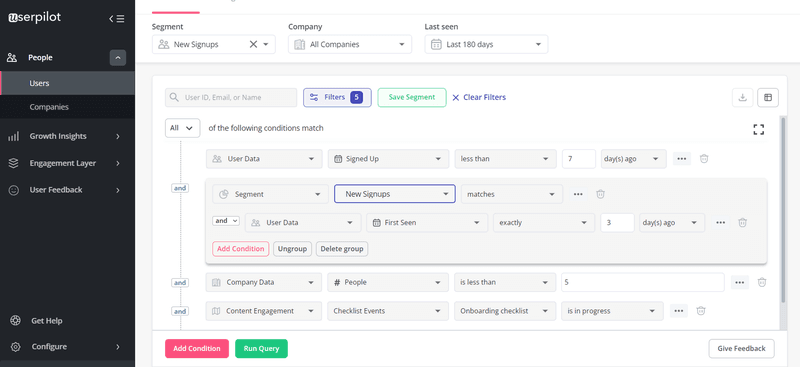
Collect and analyze customer feedback
Whether you want quick quantitative surveys or in-depth qualitative feedback, Userpilot has you covered.
Our platform gives you access to several survey templates you can customize to match your goals.
Additionally, you can create surveys code-free just by using our drag-and-drop editor.
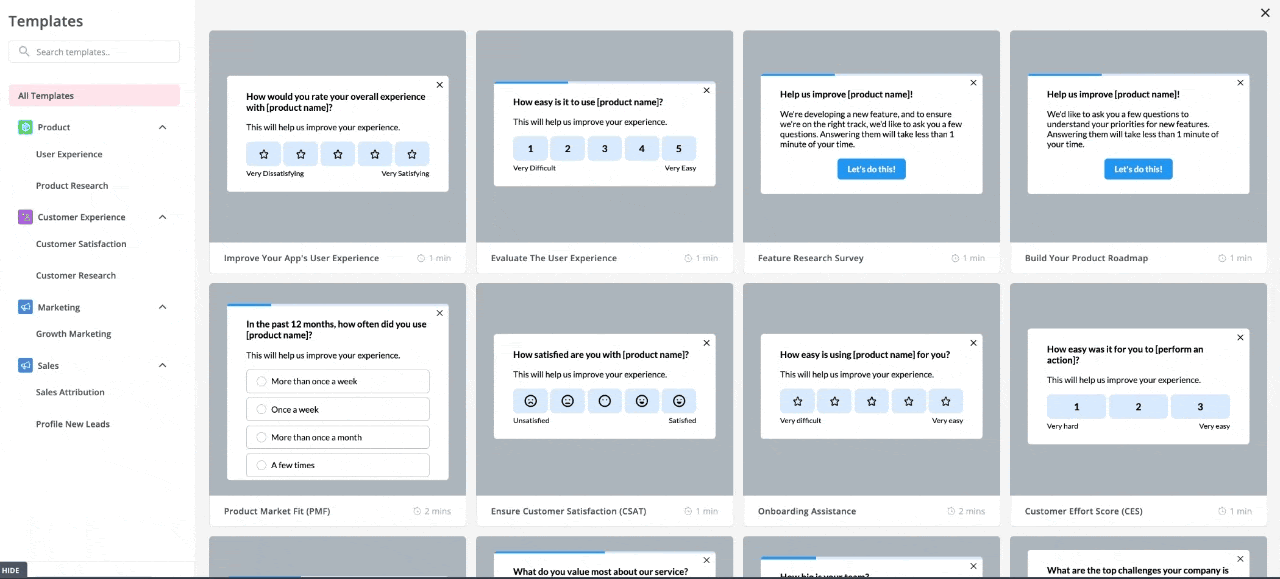
After creating your surveys, you can assign custom events to them and set them to trigger contextually at different touchpoints.
Userpilot also has features to help you easily analyze and make sense of survey results. You’ll understand how your surveys are performing in real-time and note improvement points.
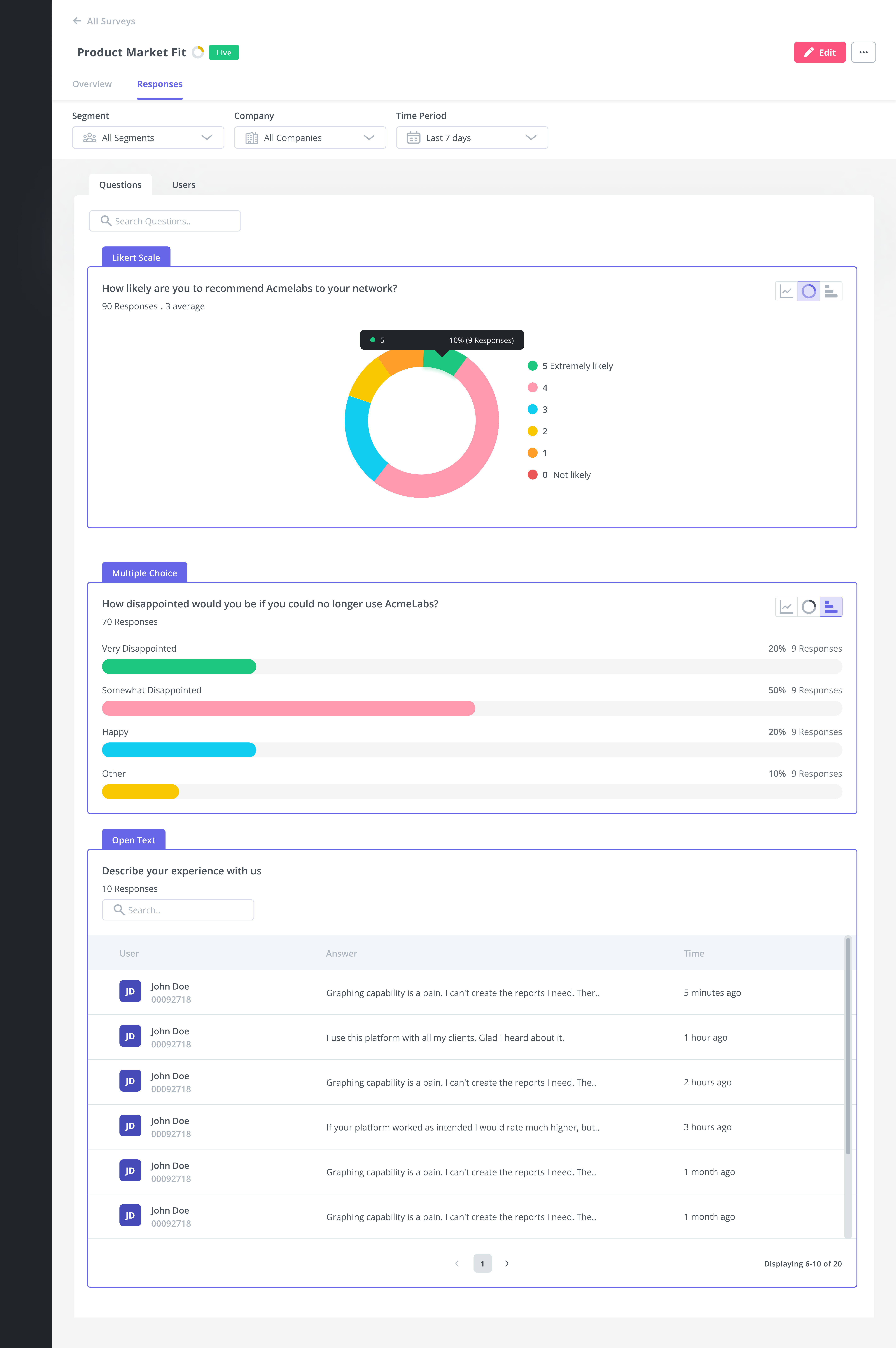
Perform funnel analysis to identify friction points
Our platform lets you analyze product usage data and use the insights to improve customer experience.
Begin by mapping the user journey and utilizing Userpilot to set goals for each stage. Take note of where users drop off and investigate the product usage at those points further to identify and fix friction points.
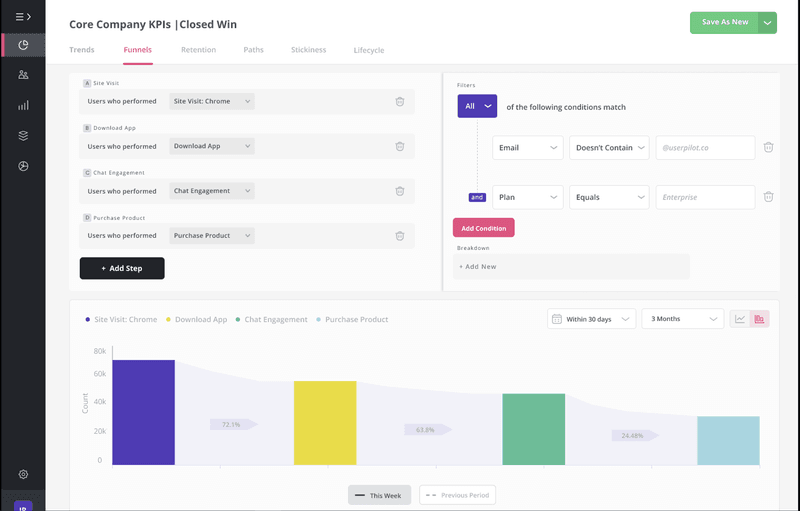
Conclusion
Improving your company’s ability to retain and turn ordinary users into loyal customers will benefit the bottom line—and that’s when the money spent on acquisition will begin to make sense.
Make Userpilot a part of your customer retention marketing process today. Get a demo now to see how our platform can help you create experiences code-free and analyze user behavior to glean insights that drive retention.






